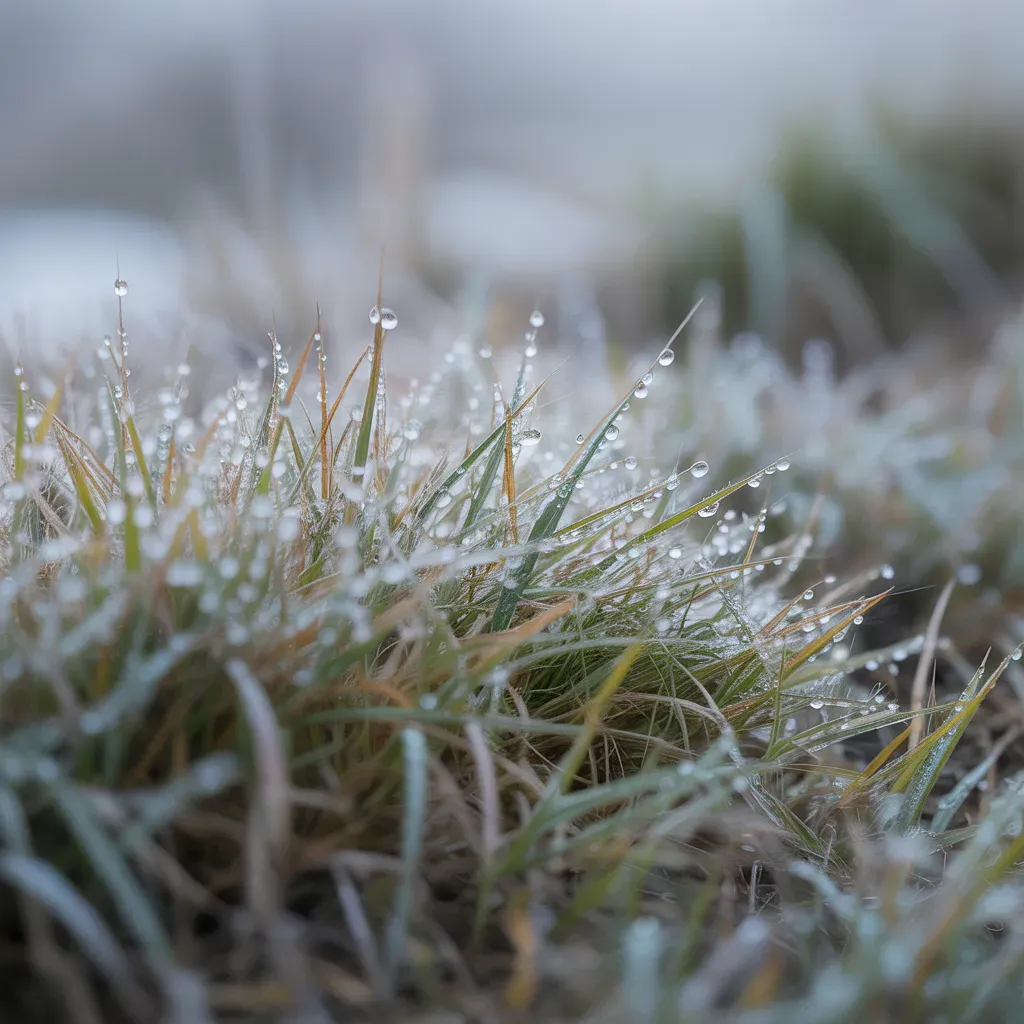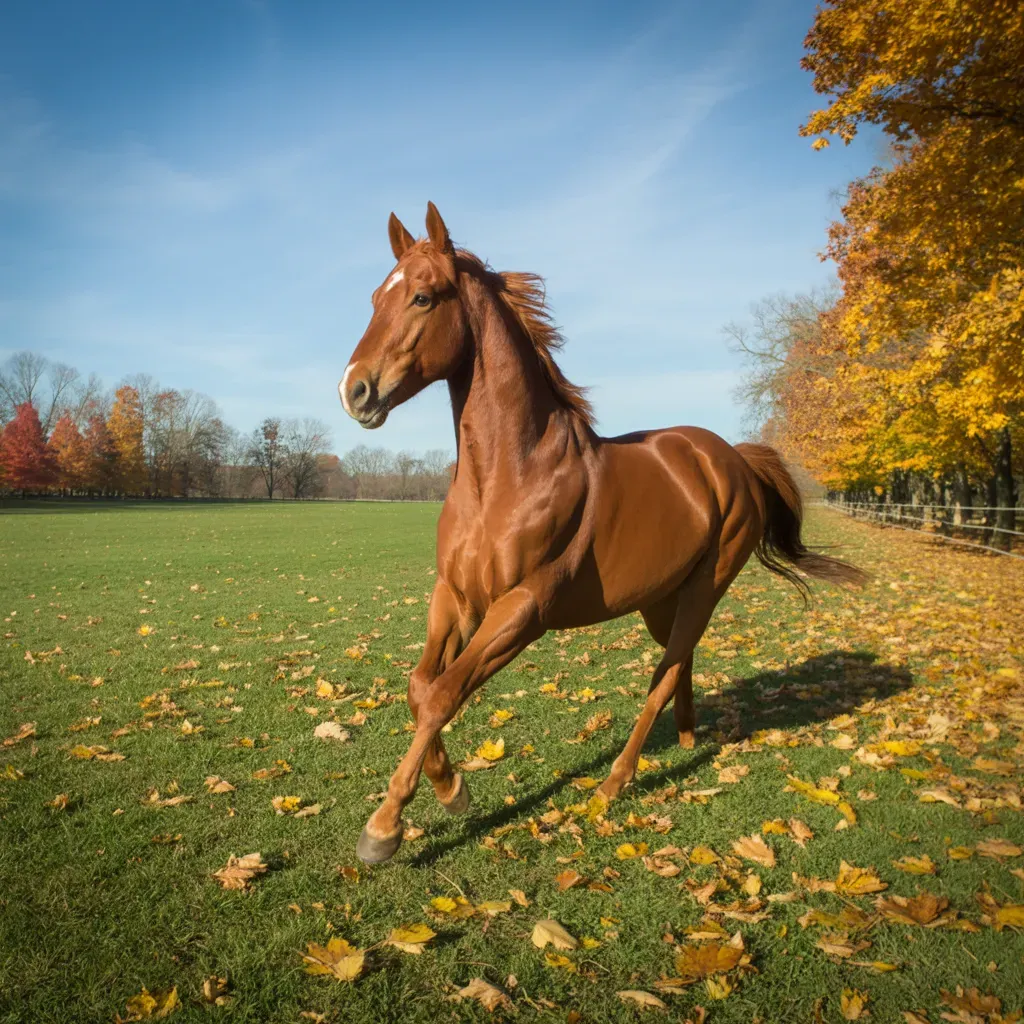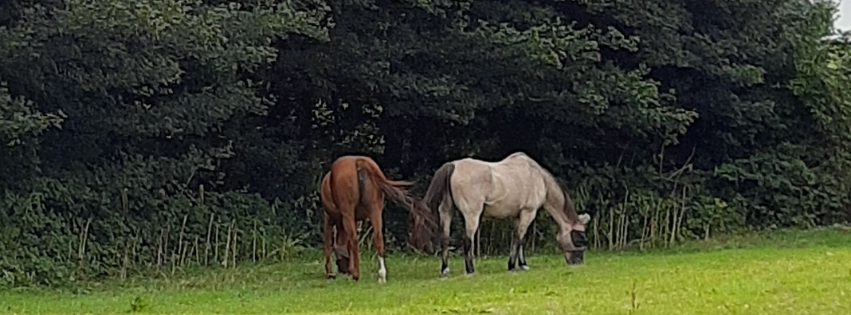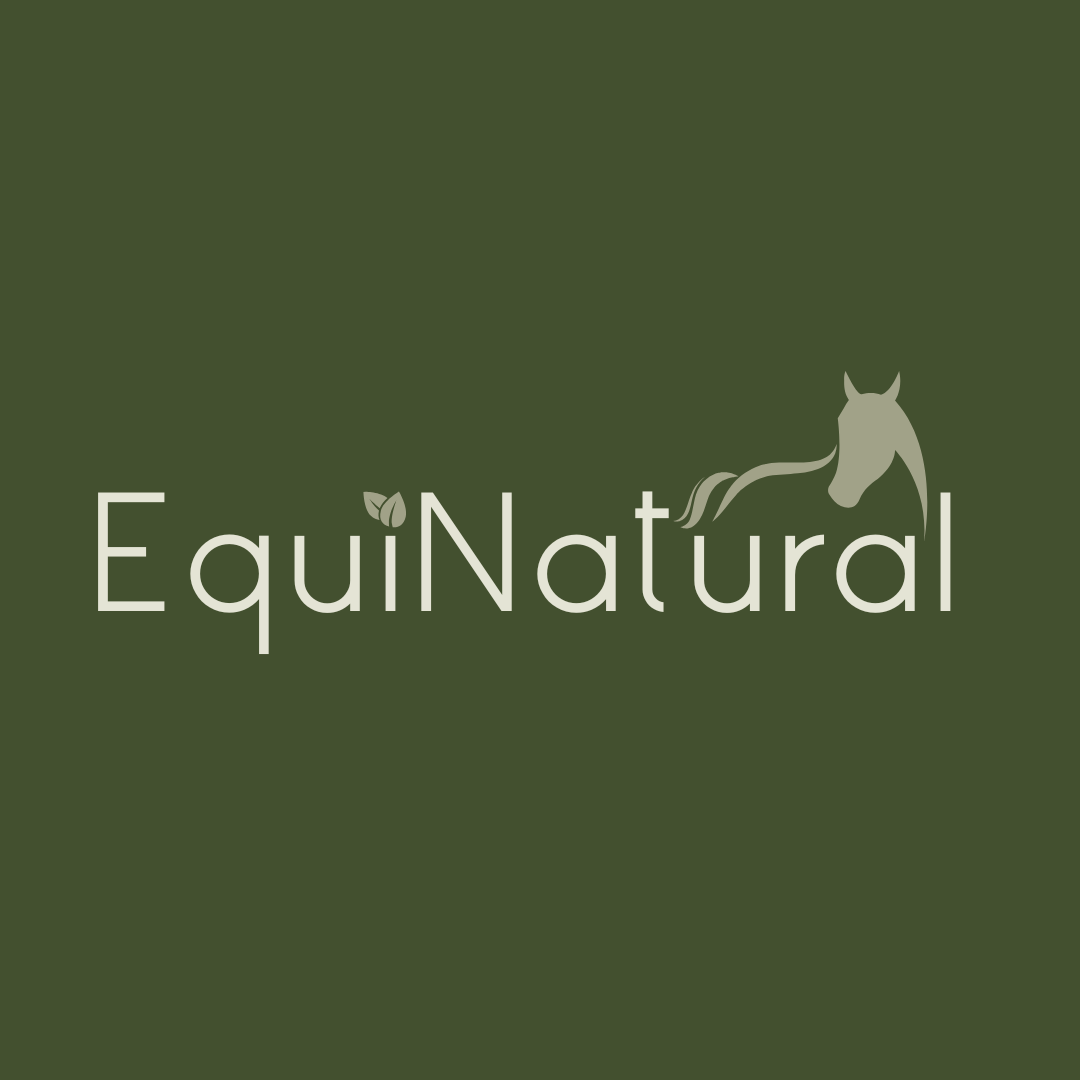Why we should feed hay all year round
Once upon a time we had what turned out to be a very short stay at a (conventional stylie) BHS-Approved livery yard.
Why so short? It was mainly due to two particular issues (sadly many others but these were the main two) which made me literally lose valuable sleep and send my BP over the edge. First up, when I originally went to view I naturally asked about turnout rules, and was told that if there was prolonged heavy rain, the horses may be kept in for a day or two. Fair cop, I thought, and as the rest looked quite nice, we signed up.
Well, as it happens, the day we moved the horses they were then immediately on rain lockdown for Nine.Weeks.Solid. T’was only then that the other liveries explained that the YO’s husband (a former cattle farmer) insisted that the ground have at least 3 clear days to dry out before the horses could go back out, so we’d bite our nails to the quick watching two sunny days go by, while horses stayed locked up in their stables, only for it to rain again on day 3 and we were back to square one.
(As it turns out, we were lucky with just 9-weeks. Another livery told us that when she moved in 6-years previously, her horse was then on 5-month’s solid rain lockdown! And yet oddly she was still happy to be there , which I really struggled to get my head round ...)
Needless to say I was in bits over this, waking each night worrying myself sick for our horses’ sanity, never mind my own which was slowly crumbling. Interestingly, they seemed to cope a whole lot better than I was, although in fairness I had them on our StressTonic for the whole time …
Finally, the sun broke through, a May heatwave hit, and the horses were allowed out. And then came the final punch in the face. The farmer was clearly more pro-cow than pro-horse, and he didn’t like the horses’ tiny individual paddocks to look untidy. And for what turned out to be our final 3-weeks, the heatwave shrivelled all the grass to crispy, so naturally I put out adlib hay for our horses.
Until one day, when husband did our horses’ evening shift by himself, and the farmer cornered him and told him to stop putting hay out because, and I quote, “Your horses are old, they don’t do any exercise,
therefore they don’t need to be fed.”
Well.
I think I’ll just give you take a second or two to let one that sink in …
The next day, hoping to get this sorted, I knocked on said farmer’s door (his YO wife was away for the weekend) and tried to politely point out we had to put hay out because with this heatwave there was absolutely no grass, and I was really happy to pay more for extra hay, and that unlike a cow the equine hindgut very much needs fibre going through it on a constant trickle basis because of the 24/7 acid production, plus the hindgut fibre fermenters needed to work 24/7 otherwise they'd die and that makes horses really sick etc etc, blablabla …
No surprise, he wasn’t having any of it. He steam-roller’d over me saying he didn’t like ‘the mess’ we were making with the hay, while flatly telling me, and again I quote, “I know exactly how all farm animals should be fed”.
Hmm. So our horses were nothing more than livestock eh? As I headed off to the naughty step, I was acutely aware that I’d just been shot down in flames by an equine-clueless running an equine livery, and he’d just tried to make me feel that I should be grateful to be there …
Takes all sorts to make a world I guess. Needless to say we were gone in 48-hours.
And so to the real world
FACT - Rationing hay risks compromising a horse’s health.
But why? Surely if a horse consumes fewer calories, it might help them lose some extra summer weight? After all, this is how it works for us humans …
But, it’s not just about calories – food is functional; it’s about the information and instructions that the food/fuel gives to the body, and while we're at it, a horse is not a cow, nor a human. Evolution designed the horse to be fundamentally different to us all, and not just because they can run much faster or cope with a whole lot less sleep - their digestive system also differs fundamentally from ours.
Biologically speaking, us humans are omnivores (food sourced from both plants and animals), and over millenia we’ve adapted to obtain our nutrients and energy primarily via the small intestine because for starters, we’re designed to consume much higher protein levels from meat/dairy (okay, hands up to those vegan/veggies out there) which have a significantly higher energy density than sugars. Proteins generally come in at 1.5 times sugar energy, with fats twice as much, never mind our higher carb ratios as well.
And due to the higher energy and nutrient content in our human food, we only need to consume small amounts of it per day to meet our needs. Imagine if we hit the sofa and trickle-fed ourselves with our nutrient-rich high energy food all day long with no breaks … yikes! 😶
Meanwhile the horse has evolved completely differently to a diet of low sugar/high fibre - being herbivores they’ve not adapted to food with such a high energy and nutrient density as us. Over millenia horses have primarily thrived in harsh landscapes (i.e. tundra, steppe, desert) where many other species can’t, simply due to the lack of easily digestible food sources.
So, our clever horses have very successfully evolved by developing a hindgut that generates the energy they need from plant fibres, with the help of special cellulose-loving microbes that happily colonise themselves in the large intestine. They can convert the leanest food source - plant fibre - into their own energy source in their hindgut, which our human gut can’t do. For us, plant fibre acts as exactly that - fibre, vital for peristalsis motility and as prebiotic food for our colon biome, but absolutely not as an energy source.
So what’s this cellulose stuff all about?
Cellulose is found in the stems of long grass (hay), and is basically a complex chain link of a type of sugar molecule, but this complexity makes it difficult to digest. Compared to the molecular energy density of other nutrients, i.e. fats and proteins, cellulose contains the lowest energy value. And because it’s so difficult to break down, this means a horse has to eat huge amounts of cellulose fibre to obtain enough energy from it, and they can only do this if they eat stemmy grass continuously.
We all know a horse needs 2-3% of their bodyweight in grass forage to meet their energy needs, so for a 500kg horse we’re talking 10-15kg per day, and … the less nutritious the forage, the more of it needs to be eaten. And remember, a horse is an almighty big animal, yet they have a really small stomach, so they can’t absorb large quantities in one go, hence the trickle-feeding technique. Their stomach should be constantly full, unlike a typical predator like us, or a dog/cat, where we tend to overstuff then have a long break for digestion and a snooze.
Then there's the issue of stomach acid, and again we’re completely different. A horse’s stomach constantly produces hydrochloric acid, which is continually absorbed into the continually eaten food and buffered by bicarb-containing (acid soothing) saliva.
Emphasis on ‘constantly produced’ - whether the horse's stomach is empty or not, the acid keeps on coming, hence why it’s so detrimental for a horse to run out of grass forage. Cue squamous stomach ulcers developing as the acid burns both the oesophageal and intestinal mucosa.
Again this is the complete opposite of us predators – when our stomachs are empty, our acid production stops.
And so, after the stomach-acid wash, the food digesta heads into the small intestine where the expected low amounts of sugars, starch, fat and protein nutrients from the grass forage are assimilated and absorbed into the bloodstream, ready to be utilised as either metabolic energy suppliers or building materials.
Another emphasis - note ‘low amounts’ of these nutrients. Remember, the horse’s gut is evolved to eat low-nutrient grass forage. However, these days we have a tendency to overstuff our horses from shiny feedbags full of inappropriate sugary carbs and bulking fillers, plus sloshes of liquid oil, unnecessary higher protein forages, i.e alfalfa, and way too many sugary treats.
Result? The digestion process goes into meltdown because the equine gut simply hasn’t adapted to process such large amounts of these nutrients. And if any of these manage to get into the hindgut due to overload, we’re instantly risking upsetting the hindgut biome balance, triggering acidosis/dysbiosis/leaky gut/faecal water, as well as IR, kidney overload, obesity, laminitis, colic …
(A Top Tip re those shiny feedbags. Remembering that a horse is nothing more, and nothing less, than a hindgut grass-forage fibre-fermenter, if ever you’re stuck as to what feedbag to feed from, or not, simply ask yourself – is it made from grass? Check the ingredients, and if it’s not, don’t feed it. Simples. 😉)
Now to the most important organ in the horse’s gut system - the large intestine, aka the hindgut, and its microbiome
So, after those potentially hindgut-biome-harming nutrients have all been dealt with in the small intestine, the friendly hindgut fibre-fermenters will now merrily get stuck into the plant fibres, and this is where the magic happens because ... This creates a whole load of extra vital nutrient metabolites that the horse can absorb and utilise as energy, such as the volatile fatty acids - butyrate, acetate and proprionate, along with certain amino acids and the B-vitamins 6 and 12 in their necessary activated form. (See our KPU page as to why activated B6 is so vital for the liver’s biotransformation process).
But – now to the bad news. If there isn’t enough fibre going through the hindgut, these vital fibre-fermenters will starve, then die, each releasing a harmful endotoxin which puts a huge extra burden on the liver which is now trying to biotransform them all, and all the more so if it’s no longer getting its vital B6 from the hindgut's metabolite production. Meanwhile, the remaining microbes will begin to eat away at the protective layer of the intestinal mucosa because they’re still starving, so we’re now talking inflammation of the gut wall which can further risk the leaky gut/faecal water syndrome.
Then there’s the psychological stress effect
FACT - If a horse is hungry/starved, they get seriously stressed.
For the hungry wild horse, a weakened horse is easy prey. For the domestic stabled horse who isn’t given enough hay to last the night and has no opportunity to go in search of more, they’ll likely develop those well-known stable habits, i.e. weaving, wind-sucking, cribbing, box-walking et al. Remember, if there’s no food available the stomach acid will burn their oesophageal and intestinal mucosa so they’ll very quickly become very uncomfortable, and hugely anxious with it. This leads to the release of the stress hormone, cortisol, which will stay switched on until you change your feed management and the gut eventually heals, which could take weeks if not longer.
This is a not a situation you want to prolong, as cortisol isn’t necessarily a friendly hormone; it’s fine for a perceived short-term threat because it has a vital protective job to do, but for a prolonged state of anxiety it not only permanently floods the body with acid, making the peripheral limbs feel like they’re on fire, but it also switches off several vital metabolic functions (including digestion!), while suppressing immunity and increasing blood glucose levels, which means more insulin will be released to counter this.
Not great for the already diagnosed IR/EMS horse when the vet says to reduce feed intake to below 1.5% bodyweight, as this can precipitate Hyperlipidemia. This is potentially life threatening, so we should never, ever, starve the weight off an IR/EMS horse. (See our EMS page for the full story).
Staying with our IR/EMS horses ... Reminder - a horse’s digestive tract has adapted to a constant supply of low-nutrient, cellulose fibre-rich forage. But back in the 1950s/60s along came intensive farming, its progressive high-performance agriculture systems dramatically changing agri-crop production forever. Where once pastures were a diverse range of beautiful, natural, wild meadow grasslands waving in the breeze, today we’re more likely to have uber-rich neon-green grass species genetically modified for cows (to produce high milk and meat yields), and grown in historically chemically-soaked soil. Absolutely not suitable for horses to feed on. If you’re interested we’ve got this all covered in our And so began the world as we know it chapter on the website.
Of course our horses are going to want to eat this dayglo-green grass because it’s like sugar lollies on tap (worse, a grass ‘blade’ has no fibre in it whatsoever, because it hasn’t had time to grow its stem yet, which is where the vital cellulose fibre sits).
And herein lies the problem that you don’t need me to tell you about – the equine metabolism simply isn’t designed to process such nutrient-rich high-sugar grass designed for cows.
So what to do?
- First up,
stop all refined, processed, nutrient-rich (small intestine digestible) feed. Seriously. Dump all those shiny brands promising allsorts
with an ingredient list of weird stuff as long as your arm, and switch to a basic, simple, soaked grass-forage-only cob, nut, or dampened short-cut grass-fibre chaff. This is all you need as your base feedbowl carrier to add in the supplements needed to balance their diet, i.e. a
mineral balancer. And just one feedbowl a day is all that’s needed - just because we eat three meals a day doesn’t mean our horse has to. 😉
- Now to
adlib access to hay, if necessary via small-holed slow-feeder hay nets (makes a whole lot less mess - our Murphy spreads it around, walks all over it, poos on it, then gets the mixer blender out), whether turned out or stabled, and spread out so the horse has to move between them.
- Top tip – don’t feed straw! Straw is not a substitute for hay - it can lead to constipation colic and more, and should only ever be offered in small rations mixed in with hay, if at all. Straw isn’t necessarily safe from a sugar and starch standpoint either - sugar levels as high as 6.2% have been reported and starch up to 4.3%; straws with a large amount of grain left in the seed heads will be even higher. Again covered on the website in our Straw page.
To conclude
Long and short, if there’s no grass, or if your horse is on skid-row grazing, or if/when stabled, it’s a given that not making enough hay available at all times is counterproductive and not in the best interests of a horse’s welfare. Certainly for the IR/EMS horse, grass access should always be restricted and hay should be permanently available 24/7.
Apart from anything, it’s vital that the horse can trickle-feed on grass-forage fibre, to prevent any acid splash onto the fragile gut mucosa due to an empty stomach, and for the hindgut microbes to have a constant supply of fibre to digest, so they can do their job round the clock.
In return, these fabulous friendly bugs will reward you and your horse with equally fabulous nutrient metabolites which will see beloved Ned thrive with boundless health, instead of causing massive stress, depression, aggression, stable vices, stomach ulcers, immune deficiency, IR, laminitis, colic, and hindgut acidosis/dysbiosis, leading to leaky gut and faecal water syndrome.
I’ll end with a final comment from that farmer who implied that I didn’t know how to feed my horses. I’ll quickly add here that I always keep quiet about my job on livery yards, as it’s my special private time with my horses and I’m not there to ‘work’ – yes I’ve had queues in the past. Plus if my secret's out the uber-conventionals tend to become my personal lynching mob, thinking I’m akin to a medieval witch and should be drowned in the village ducking pond – I’ve had to leave yards because of the, er, shall we say, unfriendliness?! It's much better for me just to keep quiet, stay private, and turn a blind eye (which sad to say can sometimes be really hard ...).
So in fairness, this farmer had no idea of my training, so I'll give him that. He finished his rant at me requesting that I start to weigh my hay like the other liveries there. Thing is, just about all bar two of the other liveries on that yard were under vet supervision, which, as no doubt they were following his rules (or didn't dare not), explained a lot.
Anyway, nuff said. As a courtesy I emailed the farmer’s wife to let her know that on the grounds of what her husband had said, together with his surprising lack of knowledge of the very animal that he was responsible for hosting, this made it untenable for us to stay. Not unsurprisingly she didn’t bother replying …
Thankfully, these days the world of equine livery has significantly Moved On from the BHS days – it’s wonderful to see the huge number of track systems opening up, and growing! I'm now so lucky to be on an amazing livery yard where the equally amazing team can’t do enough for their clients. I’m genuinely so happy to be there, if still getting used to it – I’ve never been on a livery yard where first up there's even a team on hand, never mind that they're so friendly, knowledgeable, experienced, and so willing to assist - nothing seems to be too much trouble for them, regardless of the request.
However, judging by my inbox I’m one of the lucky ones being on an equine-experienced, knowledgeable yard, but it’s taken a few decades to find it. Surely, though, regardless of what yard you're on as a client, and at the very least if said yard is including hay as part of the deal, the YO really should have a basic understanding of equine anatomy and physiology, and above all, always ensure that their 4-legged clients’ welfare and best interests are paramount. Which means adlib hay for all, and no restrictions at any cost. It's really not good enough to switch from farming cows to then thinking, "Hey, let's put some stables up, fence off a bit of a field, and get some of those hoss people in to get a bit more cash in the bank."
It's so much bigger than that, and I really don't think this is too much to ask. Is it?










